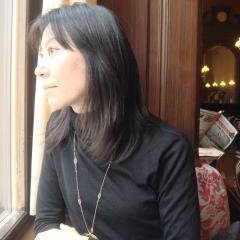If you have ever visited a Japanese temple or shrine, you may have noticed impressive trees or rocks decorated with sacred rope. These trees or rocks are considered to be gods in Japan, and the sacred rope shows that they are special. Mitsu-ishi 三ツ石, (the Three Rocks) located at Cape Manazuru, is like this. Three large, sacred rocks sit in the sea, very close to shore. The rocks are decorated with a sacred rope and can be seen from a very far distance. In 1977, the Manazuru Tourist Association adorned the rocks with the rope, which is 13cm in diameter and 37m in total length. This huge rope weighs one ton!
Manazuru, the town, is nestled onto a small, beautifully wooded peninsula that sits just southeast of Hakone, only a 1.5 hour train ride from Tokyo Station on the JR Tokaido Line, and 15 minutes from Odawara Station. The name “Manazuru” originates from the shape of the peninsula, which resembles a crane with its wings open. The cape is the neck and head of the crane and is partially composed of lava from Hakone’s ancient volcanoes.
On New Year’s Day, large crowds of people make their way down to the beach to see the sunrise early in the morning. The sun comes up precisely in the middle of the Mitsu-ishi and their sacred rope. It is said that this sunrise is majestic—dramatically suitable for the beginning of the New Year. Summer is another busy season, when many people come here and enjoy the beach. Passing through the pine forest and groves of camphor trees, you’ll suddenly find yourself standing on the edge of the cape. Go down to the rocky beach; enjoy fishing, swimming, or just viewing the Three Rocks and other stunning scenery.
Mitsu-ishi Beach
The coastline here has a gentle curve to it and from the east side of the beach you see can Odawara, and from the west side of the beach, the hot spring resort areas of Atami and Yugawara. At low tide, it is possible to walk all the way out to the Three Rocks for a closer look. Hatsu-shima Island is just in front of you, and Oh-shima Island looks quite big from here.
Bamba-ura Beach is a small sandy beach to the west. You can find some shellfish and other sea creatures between rocks. When I was there in early September, a few families had set their day tents up on the beach. Mitsu-ishi is quite popular among young families with small kids because of the gentle tides and shallow water.
Along the upper part of the beach, there is a cement pathway, called Shio-sai Yuho-do. It is easy to walk and connects with other walking courses that lead away from the beach and back up into the forest. Walking along these various hiking courses, you’ll eventually come to the Nakagawa Kazumasa Museum Bus Stop, where you can catch a bus back to the station. It is about a one-hour hike from Mitsu-ishi Beach to this bus stop.
Cape Manazuru
You can catch a bus at JR Manazuru Station for “Cape Manazuru”, the bus stop nearest Mitsu-ishi. The bus comes every 30 minutes, but they don’t have a service before 8 o’clock on weekends or national holidays. So if you want to see the sunrise on New Year’s Day, you will have to go there by car or taxi.
On the way to Cape Manazuru, you will pass Manazuru Port, where you can find boat tours, fishing, diving, and shopping at the fish market.
Near Cape Manazuru bus stop, there is a rest station with a souvenir shop, tearoom, and restaurant. There is a shellfish museum on the second floor, which has 4500 species; 50,000 specimens in total. The entrance fee to the museum is 300 yen for adults, 150 yen for school kids. They close on Thursdays.
From this rest station, it is a simple 5-minute walk down to beautiful Mitsu-ishi Beach!





































